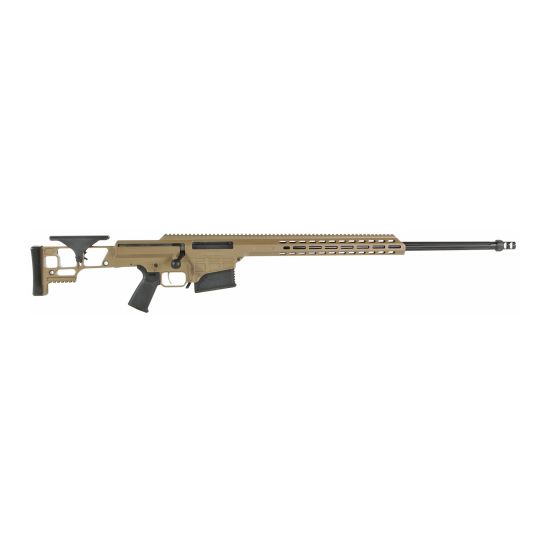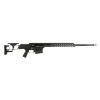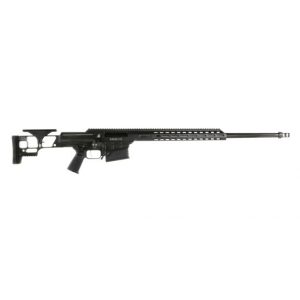Barrett MRAD SMR 6.5 Creedmoor Bolt Action Rifle, 24" Barrel, Flat Dark Earth – 18521 For Sale
$4,753.99
The Barrett MRAD SMR 6.5 Creedmoor Bolt Action Rifle is a versatile and precision-engineered firearm suitable for both range shooting and tactical missions. Featuring a 24-inch barrel and a Flat Dark Earth finish, it prioritizes accuracy and adaptability. Constructed with a durable monolithic upper receiver made from 7000-series aluminum, it ensures strength and resilience. The rifle also includes a full-length M1913 Picatinny top rail with a built-in taper for long-range precision shooting. Whether for professional marksmen or avid shooters, the MRAD is designed to deliver superior performance across various environments.
Can civilians buy Barrett-Mrad?
Yes, civilians can purchase the Barrett MRAD (Multi-Role Adaptive Design) rifle in the United States, provided they comply with all federal, state, and local regulations regarding firearm ownership. This typically means undergoing a background check and purchasing through a licensed firearms dealer. However, laws may vary by jurisdiction, so it’s important to verify the specific regulations in your area before attempting to buy such a firearm.
What is MRAD smr?
MRAD (Minimum Resolvable Angular Distance) and SMR (Systematic Measurement Radar) don’t directly relate to each other in a specific term “MRAD smr.” However, MRAD is a measurement commonly used in optics and ballistics to describe angular distance. If you’re asking in the context of a specific technology or field, it may refer to specialized equipment or a concept within that domain. More context would be needed to provide a precise answer. If you have more details or a specific context in mind, please share!
How far can the Barrett-Mrad shoot?
The Barrett MRAD (Multi-Role Adaptive Design) is capable of effective precision shooting at ranges up to about 1,500 to 2,000 meters, depending on the specific caliber used and environmental conditions.
Is the MRAD a good rifle?
The Modular Rifle – Advanced Design (MRAD) by Barrett is generally well-regarded in the firearms community. Known for its accuracy, modular design, and adaptability, it is used by both military and civilian shooters. It offers features like a user-changeable barrel system, various caliber options, and high-quality construction, making it suitable for long-range shooting. However, whether it is a “good” rifle depends on individual preferences and specific use cases, such as budget, intended use, and personal ergonomics.
Are Barrett rifles worth the money?
Deciding whether Barrett rifles are worth the money depends on several factors, including their intended use and your personal preferences. Barrett rifles, particularly their .50 caliber models, are renowned for their long-range accuracy, durability, and powerful performance. They are often used by military and law enforcement agencies around the world for these reasons.
For a civilian user, consider the following:
1. **Purpose**: If you need a rifle for long-range shooting, extreme precision, or specialized applications such as anti-material tasks, a Barrett rifle might be worth the investment.
2. **Budget**: Barrett rifles are expensive, and costs extend beyond the initial purchase to include ammunition, maintenance, and potential modifications.
3. **Collectibility**: If you are a collector of high-end firearms, a Barrett rifle could be a valuable addition due to its reputation and craftsmanship.
4. **Experience Level**: These rifles are often best suited for experienced shooters who can fully utilize their capabilities.
In summary, Barrett rifles offer exceptional quality and performance, particularly for specialized and professional uses. However, for general or recreational shooting, there may be more cost-effective options available.
Are 50 cals legal in the US?
Yes, .50 caliber rifles, such as the Barrett M82, are generally legal to own in the United States. However, the legality can vary by state and local regulations. Some states have specific restrictions or bans on .50 caliber firearms, so it’s important to check the local laws where you reside.
What does SMR stand for rifle?
SMR stands for “Special Mission Rifle.”
How many inches is a MRAD at 100 yards?
A milliradian (MRAD) is an angular measurement used in ballistics and scope adjustments. At 100 yards, 1 MRAD is equivalent to 3.6 inches.
Who uses Barrett Mrad?
Barrett MRAD (Multi-Role Adaptive Design) rifles are typically used by military and law enforcement personnel as well as civilian long-range shooting enthusiasts. The rifle is renowned for its modularity, precision, and adaptability to various calibers, making it suitable for different tactical and competitive shooting situations.
What sniper did Chris Kyle use?
Chris Kyle used several sniper rifles during his time as a Navy SEAL sniper. One of the primary rifles he used was the McMillan TAC-338, chambered in .338 Lapua Magnum. He also used the Mark 12 Mod 0/1 Designated Marksman Rifle and the MK 11 suppressed sniper rifle, among others.
What round do military snipers use?
Military snipers commonly use the 7.62×51mm NATO and the .308 Winchester rounds. Additionally, some sniper rifles are chambered for larger calibers such as the .300 Winchester Magnum and the .338 Lapua Magnum for extended range and higher accuracy. The choice of round can depend on the mission requirements, the sniper rifle used, and the target’s distance.
Is 300 PRC better than 338 Lapua?
The answer depends on what criteria you’re using to determine which cartridge is “better.” Both the 300 PRC (Precision Rifle Cartridge) and the 338 Lapua Magnum are high-performance cartridges used primarily for long-range shooting and hunting, but they have different characteristics:
1. **Ballistics and Range:**
– The 338 Lapua is known for its long-range capabilities and has been a staple for military snipers. It typically offers greater power and energy, making it suitable for extreme long-range shooting and big game hunting.
– The 300 PRC is designed for high ballistic efficiency with modern long-range hunting and competition in mind. It generally provides a flatter trajectory and less recoil compared to the 338 Lapua.
2. **Recoil:**
– The 338 Lapua generally has much higher recoil due to its larger size and power. This might be less comfortable for some shooters over long sessions.
– The 300 PRC has reduced recoil compared to the 338 Lapua, making it easier to shoot for extended periods and allowing quicker follow-up shots.
3. **Ammunition Availability and Cost:**
– The 338 Lapua, being more established, might have wider availability in terms of rifle and ammo options, but it typically has high ammunition costs.
– The 300 PRC, while newer, is gaining popularity, potentially offering more modern rifle options but still might have less availability than the 338 Lapua.
4. **Intended Use:**
– For military and extreme long-range applicatioons, the 338 Lapua might be better suited due to its power.
– For competitive shooting or hunting where less recoil is desired, the 300 PRC may be more advantageous.
Ultimately, the “better” option depends on your specific needs, such as purpose, budget, and preference for recoil management.
Can civilians own military grade weapons?
Laws regarding civilian ownership of military-grade weapons vary significantly depending on the country. In the United States, civilians cannot generally own military-grade weapons like fully automatic firearms or heavy arms without special licenses and approvals due to regulations such as the National Firearms Act and the Gun Control Act. These laws require registration, background checks, and approval from the Bureau of Alcohol, Tobacco, Firearms, and Explosives (ATF) for certain types of weapons. In other countries, civilian ownership of such weapons might be more heavily restricted or prohibited entirely. It’s important to consult local laws and regulations for accurate information specific to each location.
Who can buy a ghost gun?
As of my last update in October 2023, ghost guns are firearms that are assembled from kits or 3D-printed parts and lack serial numbers, making them difficult to trace. The regulations concerning who can buy ghost guns vary by jurisdiction. In the United States, for example, federal law allows individuals to build their own firearms for personal use without a license, as long as the resulting firearm is not sold or transferred. However, several states have enacted stricter laws regulating or banning the sale and manufacture of ghost guns. These laws can include background check requirements, serial number mandates, and outright bans. Always check local and state regulations to determine the specific requirements or restrictions that apply in your area.
What is the range of the Barrett Mrad sniper rifle?
The Barrett MRAD sniper rifle has an effective range of approximately 1,500 to 2,000 meters, depending on the caliber used and environmental conditions.
Be the first to review “Barrett MRAD SMR 6.5 Creedmoor Bolt Action Rifle, 24" Barrel, Flat Dark Earth – 18521” Cancel reply
Related products
Barrett MRAD SMR 6.5 Creedmoor
Barrett MRAD SMR 6.5 Creedmoor Bolt Action Rifle Fixed Stock 24″, Black – 18520



Reviews
There are no reviews yet.